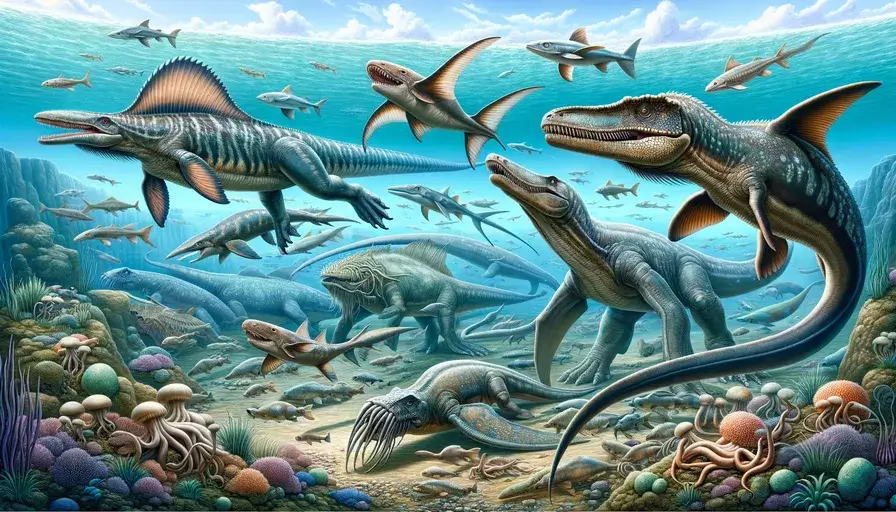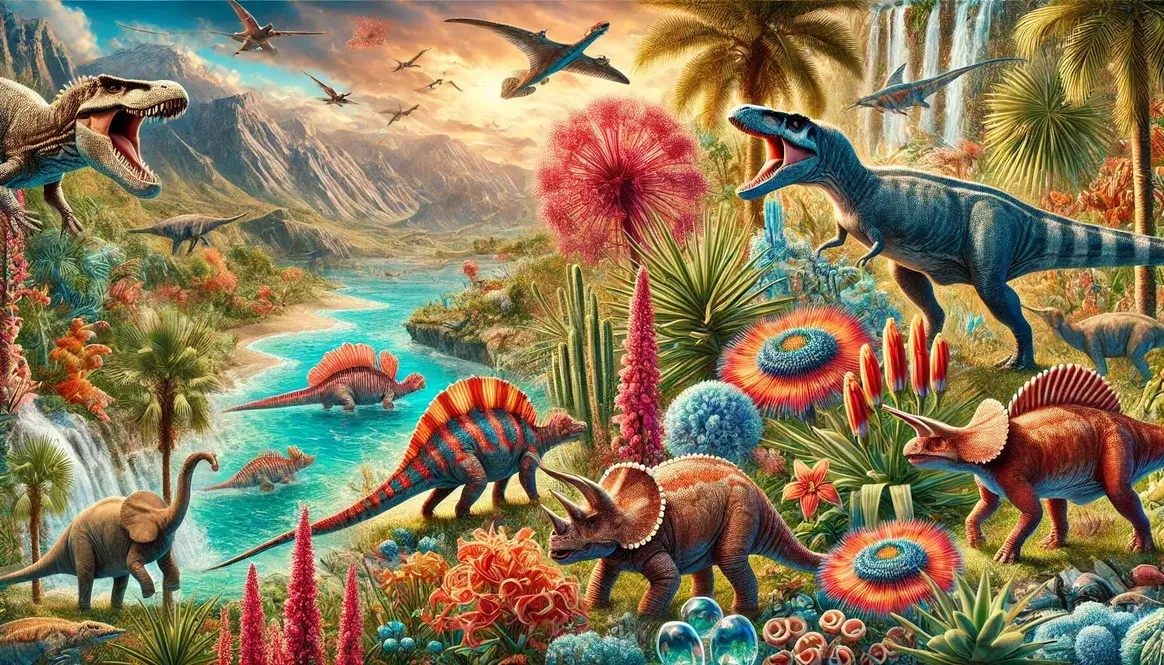Imagine a world where the oceans were filled with fearsome predators, ruling the waves with their powerful jaws and sleek, streamlined bodies. This was the reality during the Cretaceous period, around 145 to 66 million years ago, when Mosasaurs and Plesiosaurs reigned supreme in the Earth’s seas. These incredible marine reptiles have captured our imaginations for centuries, and today, we’re going to dive deep into their fascinating world.
Evolutionary History
To understand Mosasaurs and Plesiosaurs, we first need to take a look at their evolutionary history. Both of these marine reptiles emerged during the Mesozoic Era, which is often called the “Age of Reptiles.”
The Rise of Mosasaurs
Mosasaurs, which means “Meuse River Lizards” in Latin, evolved from a group of land-dwelling lizards called aigialosaurs around 98 million years ago. Over time, they adapted to life in the oceans, developing:
- Powerful, paddle-like limbs for swimming
- A long, streamlined body for cutting through the water
- A large, powerful jaw filled with sharp teeth for catching prey
Fun fact: The largest known Mosasaur, Mosasaurus hoffmannii, could grow up to 56 feet (17 meters) in length – that’s longer than a school bus!
The Origin of Plesiosaurs
Plesiosaurs, on the other hand, have a more ancient history. They first appeared around 203 million years ago during the Triassic period and thrived until the end of the Cretaceous. Plesiosaurs are often divided into two main types:
- “Plesiosauromorphs” – These had small heads and long necks, like the famous Elasmosaurus.
- “Pliosauromorphs” – These had large heads and short necks, like the mighty Liopleurodon.
Despite their differences, all Plesiosaurs shared some common features, such as:
- Four paddle-like flippers for swimming
- A wide, barrel-shaped body
- A short tail, unlike the long, powerful tails of Mosasaurs
So, while Mosasaurs and Plesiosaurs both ruled the Cretaceous seas, they had quite different evolutionary histories and adaptations.
Physical Characteristics
Now that we know a bit about their origins, let’s take a closer look at the physical characteristics of Mosasaurs and Plesiosaurs.
Mosasaurs: The Sleek Predators
Mosasaurs were the ultimate marine predators of the Cretaceous. They had:
- Long, streamlined bodies – This allowed them to glide effortlessly through the water, much like modern-day sharks.
- Powerful, paddle-like limbs – Their limbs were well-suited for swimming, with webbed fingers and toes.
- Large, powerful jaws – Mosasaurs had jaws filled with sharp, conical teeth, perfect for catching and tearing apart prey.
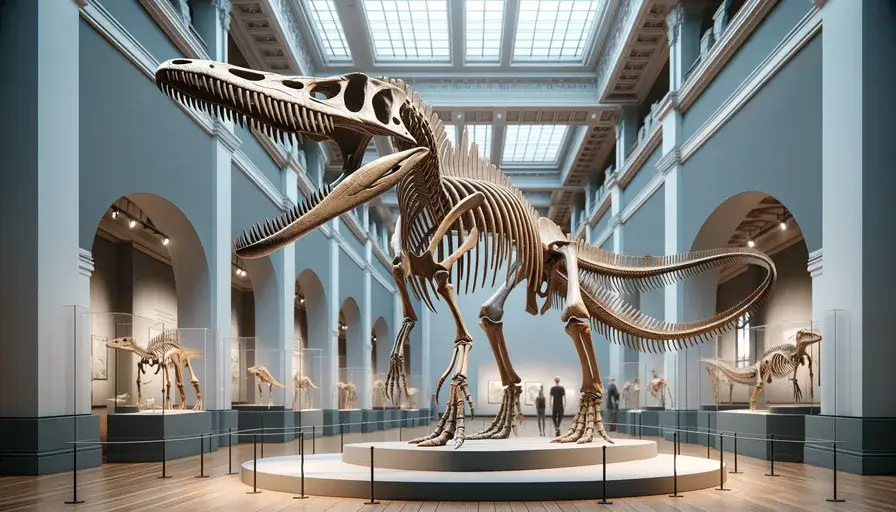
Plesiosaurs: The Diverse Swimmers
Plesiosaurs, while also marine reptiles, looked quite different from Mosasaurs. They had:
- Barrel-shaped bodies – This body shape allowed them to float easily and conserve energy while swimming.
- Four paddle-like flippers – Unlike Mosasaurs, Plesiosaurs used four flippers to swim, giving them great maneuverability in the water.
- Varied neck lengths – Some Plesiosaurs, like Elasmosaurus, had incredibly long necks, while others, like Liopleurodon, had much shorter necks.
Interesting insight: Despite their different appearances, recent research suggests that Mosasaurs and Plesiosaurs may have had similar swimming styles, using their limbs and tails to propel themselves through the water in a way that’s similar to modern-day sea lions.
As you can see, while Mosasaurs and Plesiosaurs both ruled the Cretaceous seas, they had quite different physical characteristics that set them apart. In the next section, we’ll explore how these adaptations helped them thrive in their ocean habitats.
Behavior and Habitat
Mosasaurs and Plesiosaurs were both top predators in the Cretaceous seas, but they had different behaviors and occupied different niches in their ocean habitats.
Mosasaurs: The Apex Predators
Mosasaurs were fierce predators, and their hunting strategies were similar to those of modern-day sharks and killer whales. They likely:
- Hunted in open waters – Mosasaurs were powerful swimmers and could chase down their prey in the open ocean.
- Ate a variety of prey – Fossilized stomach contents show that Mosasaurs ate fish, sharks, squid, and even other marine reptiles.
- Used their powerful jaws to tear apart prey – With their strong bite force and sharp teeth, Mosasaurs could easily tear chunks off their victims.
Real-life comparison: The hunting style of Mosasaurs is similar to that of modern-day great white sharks, which are also apex predators that hunt in open waters and have powerful jaws.
Plesiosaurs: The Aquatic Ambush Predators
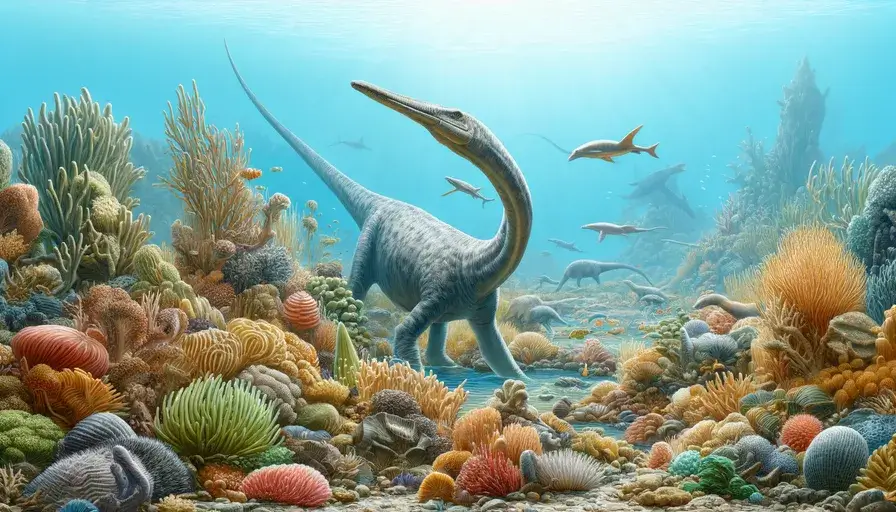
Plesiosaurs, on the other hand, had different hunting strategies depending on their body shapes. For example:
- Long-necked Plesiosaurs – These may have been ambush predators, using their long necks to sneak up on fish and squid.
- Short-necked Plesiosaurs – These were likely pursuit predators, using their powerful flippers to chase down their prey.
Plesiosaurs also lived in different ocean habitats, from shallow coastal waters to the open ocean.
Interesting insight: Some scientists believe that long-necked Plesiosaurs like Elasmosaurus may have had a similar lifestyle to modern-day sea snakes, which use their long, slender bodies to hunt for fish in coral reefs.
Fossil Discoveries and Research
Our understanding of Mosasaurs and Plesiosaurs has been shaped by numerous fossil discoveries and ongoing scientific research. Here are a few notable examples:
The First Mosasaur Fossil
The first Mosasaur fossil was discovered in 1764 in a quarry near Maastricht, Netherlands. The fossil, which was a skull, was initially thought to be from a crocodile or a whale. It wasn’t until the early 19th century that naturalists realized it was a new type of marine reptile.
The “Benton Mosasaur”
In 1975, a nearly complete Mosasaur skeleton was discovered in Kansas, USA. Named the “Benton Mosasaur,” this fossil helped scientists understand the anatomy and lifestyle of these ancient predators.
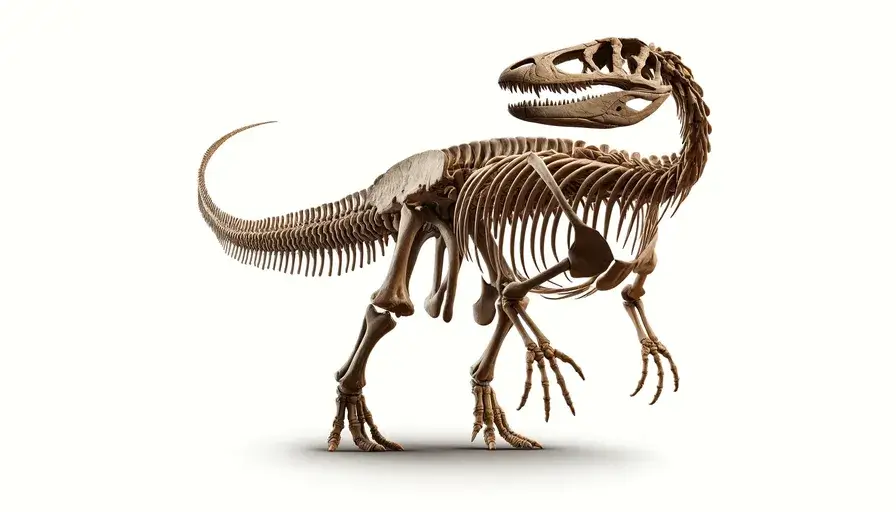
Recent Plesiosaur Research
In recent years, scientists have used advanced techniques, such as CT scanning and 3D modeling, to study Plesiosaur fossils in greater detail. For example:
- A 2017 study used CT scans to analyze the skull of a long-necked Plesiosaur, revealing that it had a very small brain and large eyes, suggesting it hunted by sight.
- A 2020 study used 3D models to simulate the swimming style of a short-necked Plesiosaur, showing that it likely used its flippers to “fly” through the water like a penguin.
Fun fact: The largest known Plesiosaur, Aristonectes, had a skull that was over 5 feet (1.5 meters) long – that’s about the size of a golf cart!
These fossil discoveries and research projects have greatly expanded our knowledge of Mosasaurs and Plesiosaurs, giving us a glimpse into the lives of these fascinating marine reptiles.
Conclusion
From their origins in the Triassic period to their dominance in the Cretaceous seas, Mosasaurs and Plesiosaurs were truly remarkable animals. With their unique adaptations and hunting strategies, they ruled the oceans for millions of years, leaving behind a rich fossil record that continues to captivate scientists and the public alike.
As we’ve seen, Mosasaurs were the sleek, powerful predators of the Cretaceous, while Plesiosaurs came in a variety of shapes and sizes, from long-necked ambush predators to short-necked pursuit hunters. Through fossil discoveries and ongoing research, we’ve been able to piece together the lives of these incredible marine reptiles and understand their place in the history of life on Earth.

